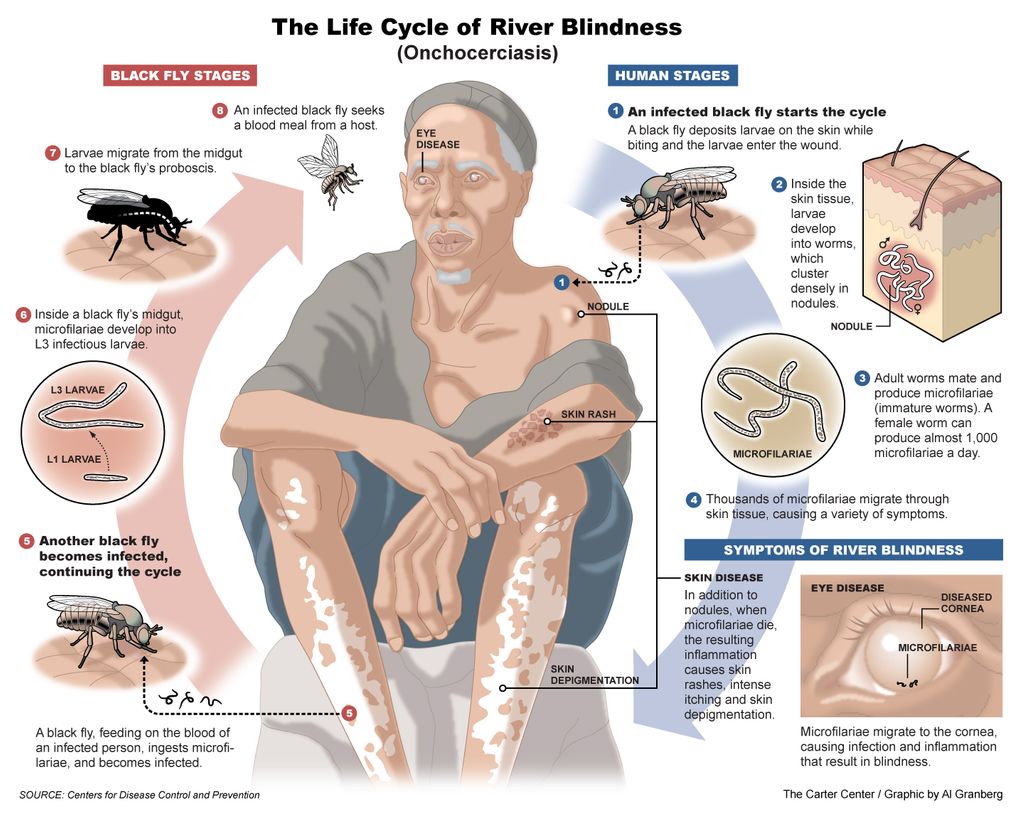River Blindness!
Jun 30, 2019 • 72 views
Onchocerciasis is an eye and skin disease caused by a nematode (filaria) known scientifically as Onchocerca volvulus. It is transmitted to humans through the bite of a Similium blackfly. These flies develop and breed in fast-flowing streams and rivere mainly in remote agricultural areas, thus increasing the chances of blindness in individuals inhabiting in nearby places. That is why the commonly known name of this disease is "river blindness". Within the human body, the adult female worm (macrofilaria) produces thousands of larval worms (microfilariae) which migrate in the skin and the eye. This is a rare and neglected tropical disease.
The most serious cases occur typically due to repeated infections through several years. Onchocerciasis is endemic in 30 countries in Africa, Brazil, Venezuela and in Yemen. Vast majority of infected people live in West, Central and East Africa. Onchocerciasis is also found in six countries in Latin America and in Yemen in the Arabian Peninsula, where the disease is believed to be exported by the slave trade. About 300 000 people are blind from onchocerciasis.

SYMPTOMS
It is told that not everyone affected by this rare disease will have same symptoms. Newly developed infections do not begin to show any symptom for nearly two years. Mild cases may never be able to know that they have been affected by the parasite. The most known symptom is blindness (from which the nickname-river blindness).
Some other symptoms include- skin changes, this change in skin is sometimes called “leopard” or “lizard” skin, itchiness, skin rash, swelling, nodules under the skin where the adult worms are prevailing (subcutaneous bumps or nodules), lesion on the eye, altered vision(visual impairment, partial or complete blindness), scarred, saggy or droopy areas of skin, lymph node inflammation (lymphadenitis), Eosinophilia. "Sowda" is a term for describing severe itching and skin darkening, often confined to one limb, which correspond this rare disease.
TREATMENT
Now, there is no drug or vaccine available to help prevent onchocerciasis. Preventing blackfly bites by avoiding areas where they are endemic help to prevent these infections. Treatment options include-
Ivermectin
Most common way to treat onchocerciasis is by using ivermectin, a drug for treating other parasitic infections like scabies and elephantiasis. It is generally given orally every three to six months until the signs of an infection fade away. Advantage of this treatment option is that it kills the larvae and sterilizes the adult females inside the body but the drug doesn't kill the adult worms themselves.
Doxycycline
A new treatment for river blindness is treating it with Doxycycline which is an antibiotic and not an anti-parasitic medication. Research shows it kills bacteria that adult worms need to sustain. After six weeks of treatment, the drug kills more than 60 percent of the adult females but not the larvae, suggesting it might need to be combined with Ivermectin. Whether this combination is safe, is unclear. For this reason doxycycline isn't considered to be a standard treatment but the research going on is much promising.
